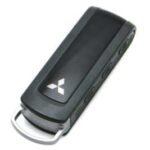BMW key fobs can be notoriously expensive to replace or program through dealerships. If you’re looking for a more cost-effective solution, programming your BMW key fob yourself is achievable with the right tools and a bit of know-how. This guide outlines a process for Bmw Key Fob Programming using the Autel IM608, a professional-grade key programming tool, along with associated programmers.
For this process, you’ll need specific equipment. The Autel IM608 diagnostic and programming computer is central, and it’s complemented by the JVC programmer and Autel XP400 key programmer. These tools, when used in conjunction, allow for in-depth access to your BMW’s key and immobilizer system. Additionally, a simple alligator clip is required to connect to a specific circuit on the FEM (Front Electronics Module) or BDC (Body Domain Controller) module, depending on your BMW model.
When selecting keys for programming, it’s crucial to choose the correct type. For F-series BMW models like the F30, the PCF7953 key fob is recommended. This key type is known for its reliability and compatibility compared to older versions like the PCF7945, which were used in E90 models and may not be suitable for newer BMWs. In the described experience, a PCF7945 key was not successfully added, highlighting the importance of using the PCF7953 for F-series BMWs.
The programming procedure begins by connecting the Autel IM608, along with the JVC programmer, to your BMW’s OBD (On-Board Diagnostics) port. Navigating the IM608’s menu, you’ll typically select the “Immobilizer” function and then “Smart Selection” followed by “FEM/BDC.” The tool will then communicate with your vehicle, reading the FEM/BDC module and preparing for the subsequent steps.
A critical point in BMW key programming, especially for older or un-prepared modules, is the concept of “jailbreaking” the FEM/BDC module. If your module hasn’t been jailbroken, you won’t be able to program keys directly via the OBD port. Jailbreaking, in this context, refers to modifying the module’s firmware to enable key programming through OBD. This typically involves a firmware read/write process directly to the FEM/BDC module using the IM608 and XP400 programmer.
If jailbreaking is necessary, the FEM/BDC module needs to be physically removed from the vehicle. Once removed, you’ll need to locate a specific small circuit on the module’s board. This circuit needs to be carefully accessed using an alligator clip connected to the XP400 and IM608. Often, a protective PCB coating needs to be gently scraped away to ensure a good electrical connection with the alligator clip. Care should be taken to avoid damaging any pins or components during this process. The IM608 then reads data from this chip, which is part of the jailbreaking process.
After the initial data reading, the FEM/BDC module must be reinstalled back into the BMW. Ensure all connections, including fuses, are properly re-attached. With the module back in place, power on the car (ignition on, engine off). The IM608, connected via OBD, will then automatically download and program necessary files to the vehicle. This step usually involves an internet connection for the IM608 to access and download the correct firmware or programming data.
Following the initial OBD programming phase, the FEM/BDC module needs to be removed again. The XP400 and alligator clip are reconnected to the same circuit on the module. This time, instead of reading, the IM608 writes files to the circuit, completing the firmware modification or jailbreaking step.
Finally, for the last time, the FEM/BDC module is reinstalled in the car. Connect the IM608 via OBD once more. The tool will then finalize the programming sequence. After these steps are completed, the system should be ready to add new keys via the OBD port using the IM608.
The benefit of DIY BMW key fob programming becomes clear when considering the cost savings. The described process enabled the programming of two keys for approximately $50 in key blank costs. This is a significant contrast to dealership prices, which can easily reach $1600 for two keys. Furthermore, in this instance, the user reported an unexpected bonus: the BMW’s iDrive system seemed to be automatically updated during the process, likely during the automatic download and coding step performed by the IM608.
While the process may seem involved, with the right equipment and careful adherence to instructions, it’s presented as manageable even for someone without extensive professional automotive experience. The Autel IM608 largely automates the complex steps, guiding the user through the required actions and disconnections/reconnections. It’s important to note that while this user found the process to be low-risk, it’s essential to proceed cautiously and ensure all connections are secure and steps are followed precisely.
It’s also worth noting that newer BMW models may simplify this process. Some newer vehicles may not require the FEM/BDC module jailbreaking step. In such cases, key programming might be achievable directly through the OBD port in a much shorter time, potentially just a few minutes.
For a successful programming experience, ensuring a stable power supply is crucial. Using a battery trickle charger, ideally around 8A, and ensuring the car’s battery is fully charged is highly recommended. The car’s engine must remain off throughout the entire programming procedure.
In conclusion, DIY BMW key fob programming using tools like the Autel IM608 offers a viable and significantly cheaper alternative to dealership programming. While steps like FEM/BDC module manipulation and potential jailbreaking might seem daunting, the process is largely guided by the programming tool and can be accomplished with careful attention to detail and the right equipment. This approach empowers BMW owners to manage their key programming needs independently and avoid substantial dealership costs.
